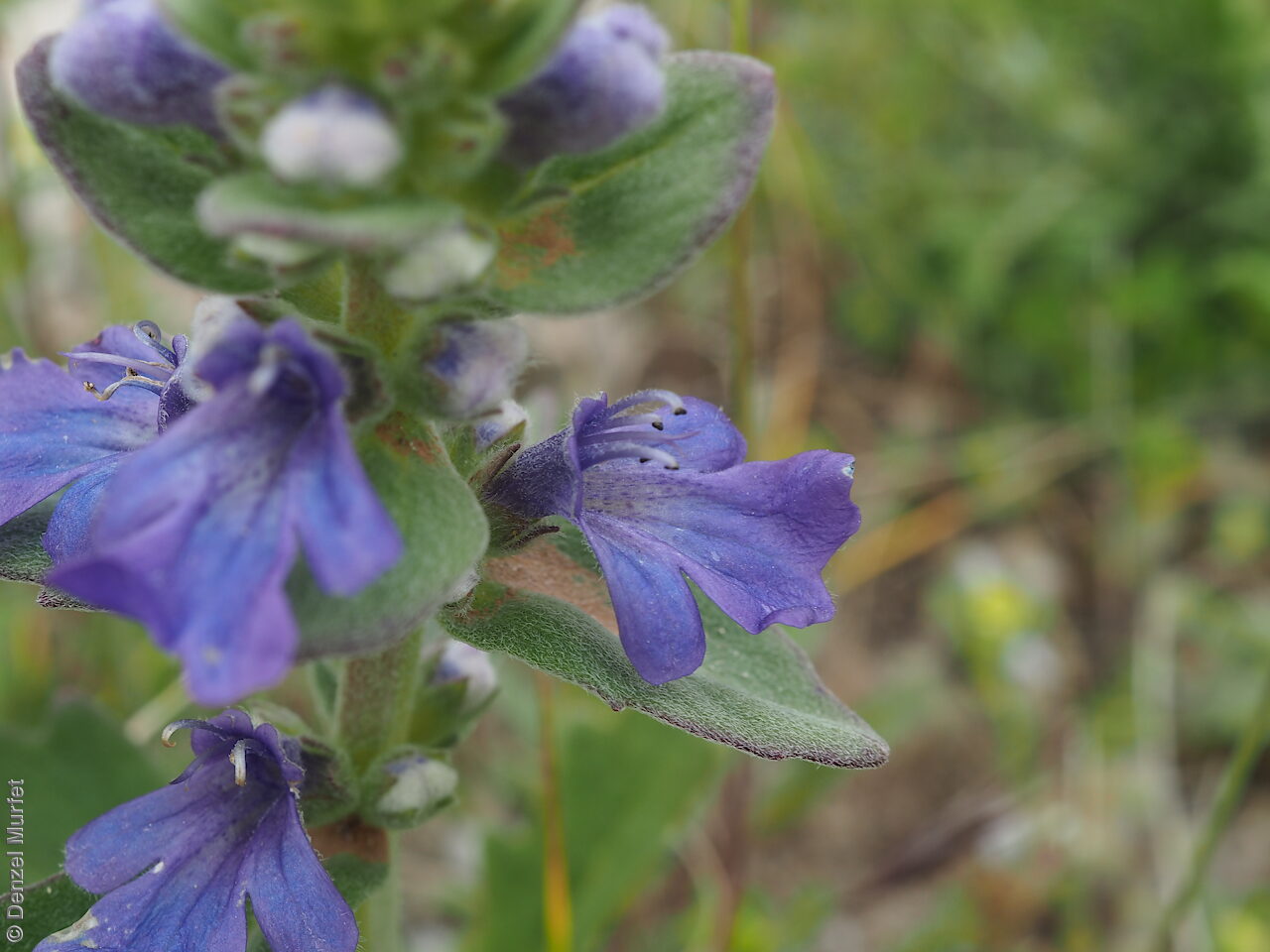



























_hreg_896.png)
Prior names
Ajuga australis f. A
Common names
Austral Bugle
Australian Bugle
Etymology
Ajiga from a Latin name for a plant called abiga belonging to this genus and the word means to drive away, referring to the medicinal properties of the plant. Australis means of or from the south, referring to the distribution of the species in the southern hemisphere. Form A manual script name referring to a different form of the species.
Distribution and status
Found in the northern Mount Lofty Ranges, Murrayland and the Flinders Ranges in South Australia. Native. Common in South Australia.
Herbarium regions: Lake Eyre, Flinders Ranges, Eastern, Eyre Peninsula, Northern Lofty, Murray, Yorke Peninsula, Southern Lofty, South Eastern, Green Adelaide
AVH map: SA distribution map (external link)
Plant description
Ascending or erect herb to c. 50 cm high. Leaves narrowly obovate to obovate to 12 cm long and 35 mm wide, surfaces variably pilose, apex obtuse or rounded, base cuneate, margin entire, crenate, toothed to lobed. Inflorescence clustered around axis of floral leaves with violet to blue, rarely pinkish tubular flowers. Flowering from September to December. Fruits are small clusters of papery brown capsules in axis of leaves. Seeds are orange-brown ovoid seed to 4 mm long and 2 mm wide, with a mesh-liked surface and a plug on one side. Seed embryo type is spatulate.
Seed collection and propagation
Collect seeds between November and January. Collect individual capsules that are turning brown and contain hard seeds or break off whole stems with numerous brown capsules. Place the capsules in a tray and leave to dry for a few week. Then rub the capsules gently with a rubber bung to dislodge the seeds from the capsules. Use a sieve to separate the unwanted material. Some seeds will be empty. Use an aspirator to siphon off the lighter, non-viable seeds from the heavier good seeds. Store the seeds with a desiccant such as dried silica beads or dry rice, in an air tight container in a cool and dry place. Seed viability is usually low for this species
| Location | No. of seeds (weight grams) | Number of plants | Date collected | Collection number Collection location | Date stored | % Viability | Storage temperature |
|---|---|---|---|---|---|---|---|
| MSB | 1,040 (4.14 g) | ~40 | 9-Nov-2006 | DJD569 Flinders Ranges |
Number of plants: This is the number of plants from which the seeds were collected.
Collection location: The Herbarium of South Australia's region name.
% Viability: Percentage of filled healthy seeds determined by a cut test or x-ray.